The potbelly stove is distinguished by a simple device, ease of use and quite decent efficiency. But it must be borne in mind that this is an object of increased danger. In order to correctly and safely install a potbelly stove in the country with your own hands, you must carefully study the safety rules and be guided by them at every stage of work.
Special design features
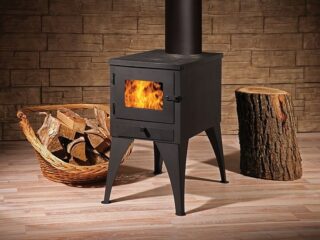
Externally, the stove is a round or rectangular box mounted on legs, with a chimney connected to it.
The device has the following device:
- Housing. Made of cast iron or refractory steel. Serves for placement and communication of all other details.
- Supports. At least four. Are carried out beyond the walls of the case. They give the product stability, create an air gap above the floor.
- Firebox. Serves for fuel combustion. Inside there are shelves and grates stacked on them.
- It blew. Adjusts the level of air supply. Serves for placing a drawer for ash and ash.
- Chimney with damper and hood. Removes combustion products. Can be used as a heater for a water heat exchanger.
The products operate on any type of solid fuel, pre-crushed to the size of the furnace. The stove can act as a stove, water heater, clothes dryer and shoes. Installing a stove stove in a country house allows you to save a lot, since finding and storing fuel is not difficult.
Fire safety rules
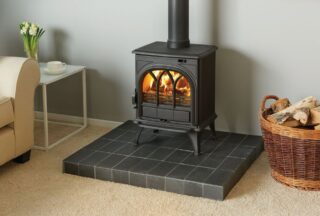
Theoretically, the potbelly stove is absolutely fire safe. The flame is isolated in a steel casing, hot and toxic combustion products are removed outside through a pipe. However, during operation, the device generates much more heat energy than water and oil radiators. The risk of carbon monoxide poisoning should also be kept in mind.
The installation of a potbelly stove in a wooden house should be carried out taking into account the following criteria:
- Floor covering type. If it is flammable, it must be partially removed or a thick layer of thermal insulation placed on top. The wood must be initially, and then regularly impregnated with a fire retardant.
- Distance to interior items. It should be at least 50 cm in order to exclude the slightest possibility of fire and damage from excessive heat. If the boiler is in the garage, the distance to the car and containers with fuels and lubricants should be at least 300 cm.
- Convenience of location. The hearth should be away from the passages to eliminate the risk of burns. It is better to put a stove in a corner or against a wall where there is no furniture.
- Possibility of unimpeded smoke extraction. The availability of access through the wall, ceiling and roof is established.
- Aesthetic component.
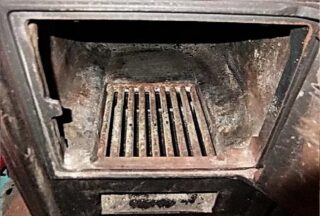
Having decided on the basic provisions of installation, you should focus on the safety rules for installation and use:
- the base of the hearth made of material with a non-combustible composition;
- minimum distance from supporting structures 10 cm;
- presence of flammable substances in a room or garage no closer than 3 m from the hearth;
- chimney height at least 500 cm from the boiler;
- constant supervision of a working oven;
- constantly closed door;
- optimal portions of fuel so that it does not go out;
- do not touch the product with your hand, there is a risk of getting burned;
- do not use explosive mixtures for ignition;
- ash pan cleaning only in the absence of combustion in the furnace;
- termination of operation in the absence of traction, as well as violation of the sealing of the structure.
The most important thing is to ensure the flow of fresh air into the room. To do this, a window must be slightly open in it or a supply channel must be equipped.
Installation steps
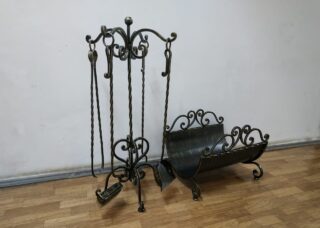
To correctly install a potbelly stove in a wooden house with your own hands, you must act consistently, carefully, without missing anything.
It is recommended to adhere to the following algorithm of work:
- Wall protection. It is carried out in order to prevent overheating of the supporting structures and to organize more efficient circulation of heated air. The walls can collapse from the heat, and the screen installed near the stove will effectively redirect the heat inside the room. The screen is made of stainless steel sheet, sheet metal and asbestos cardboard. The attachment is made rigid, excluding the possibility of falling or shifting.
- Foundation. It is necessary to cover all combustible surfaces at a distance of 50 cm beyond the boiler circuit. The best option is asbestos, steel sheet, and clinker or refractory ceramic tiles on top. This podium is completely safe and looks great.
- Pipe connection and outlet. It is advisable to make it in a collapsible version in order to subsequently ensure the possibility of repair, maintenance and cleaning. It is better to choose channels made of metal and ceramics. The second type is preferable, since it hardly collects soot and does not rust. If the potbelly stove will move, a corrugated flexible pipe should be installed. Fastening must be carried out to a branch pipe welded to the boiler body. The first and subsequent elements are already attached to it.
- Chimney outlet through a wall or roof. The first approach is more aesthetic and easier to execute. The pipes are practically invisible, there is no need to violate the integrity of the floor and roof. However, due to kinks, draft decreases, and the pipe becomes more quickly contaminated with soot and soot. The exit hole is made 20 cm larger than the channel diameter. Then a through glass is inserted into it. A pipe is passed through it. The remaining opening is sealed with mineral wool. The protruding part of the chimney is insulated to avoid condensation. An overhead sleeve is made of tin, inside which is stone wool or expanded clay. A cap is installed on the upper cut of the chimney. It catches sparks and prevents sediments, debris and animals from entering the channel.
- Connection and installation. After the completion of the installation work, the hearth is adjusted, finished and decorated. The position of the door is adjusted, if necessary, seals are added. The ash pan is fitted, a damper is cut into the smoke channel. If the hearth is not planned to be removed and moved, it can be overlaid with refractory bricks. Such a technique will increase the heat capacity of the structure and almost completely reduce the risk of burns. The blocks are laid out end-to-end with a 2-3 mm clearance for thermal expansion. The top screen can be made removable to use the surface as a hob. The brick can be finished with ceramics, pebbles or tiles.
- Design check. The hearth must be tested to ensure that the assembly diagram was correct. The firebox must be held at the maximum temperature in order to burn off the paint and oil residues. All docking stations should be carefully inspected for smoke leaks. If the work is done well, it should only come out of the hood on the roof.
A firebox should be made. Few people will like it if the fuel is dumped in a mess on the floor. You also need to prepare a container for ash, a poker, just in case, a container of water and a fire extinguisher.
How to protect a country house from fire when installing a stove
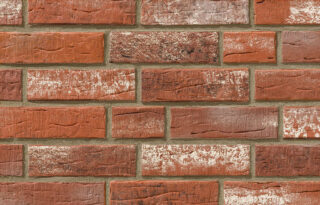
Even with the most careful observance of the work technology, everything cannot be foreseen. Where there is fire and heat, there is always the possibility of fire. It is possible to reduce the risk of its occurrence to a minimum if the elements of the interior are properly protected.
In addition to impregnation with a fire retardant, it is advisable to cover the wood with drywall. After priming, the beauty sheets can be coated with a fireproof paint that matches the interior color. Another option is ceramic tiles. The material has low thermal conductivity and is excellent fire insulation.
Clinker tiles are considered a good solution. It looks good in any interior, while simultaneously creating an effective screen even from the most intense heat. For thermal insulation of a pipe, basalt wool is considered the best option.








